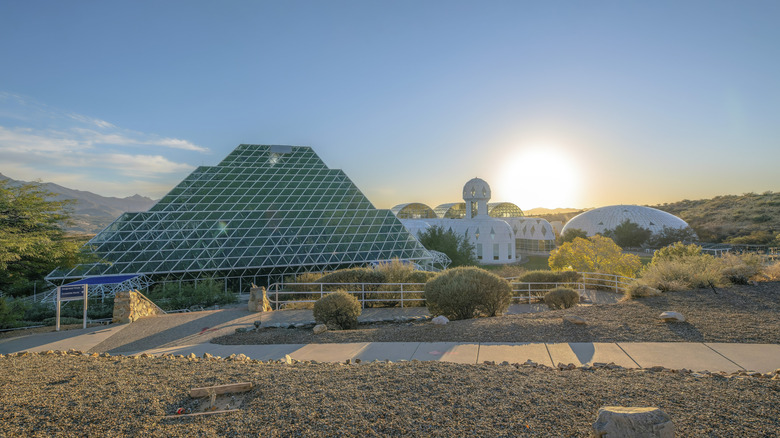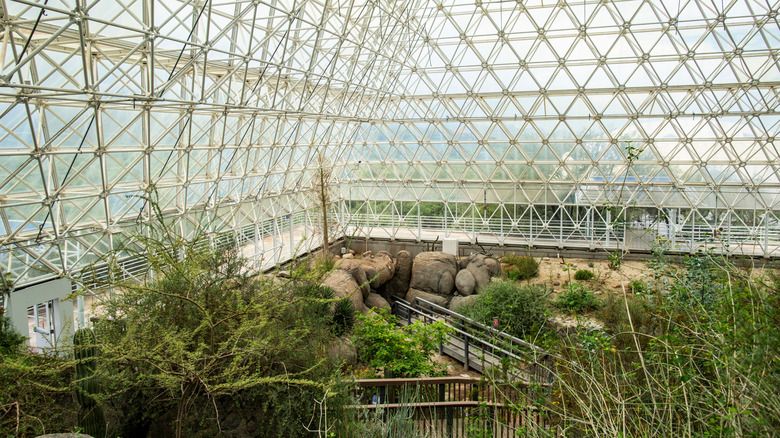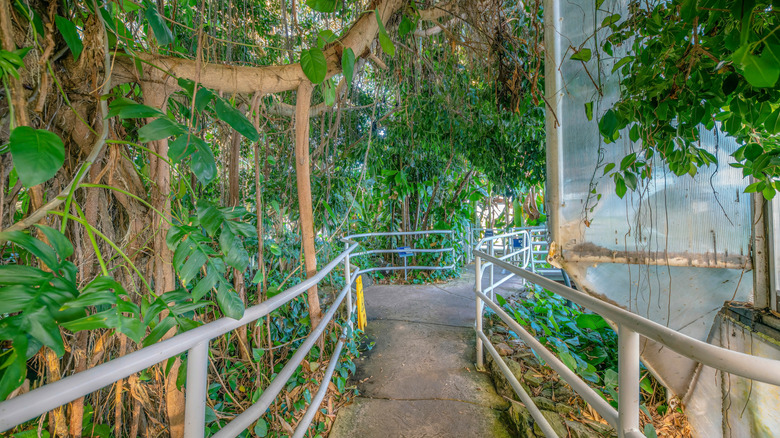In Arizona, nature is diverse and dramatic. The state’s Tonto Natural Bridge State Park is home to the world’s largest natural travertine bridge, where visitors can hike and explore its unparalleled geology. One of Arizona’s canyons is called America’s “hummingbird capital,” due to the multitudes of birds that flock to its unusual, lush oases rising from the desert floor. But perhaps the most fascinating of them all is an environment that exists within a closed dome and doubles as an ongoing science experiment. In fact, Biosphere 2 in Arizona calls itself the “world’s largest earth science experiment.” It spans more than three acres and contains five different biomes that replicate natural ecosystems.
Operated by the University of Arizona, the research center is used to study climate change and Earth systems, and it’s open to the public for self-guided tours. Historically, it was the site of controversial experiments involving humans. Its name, Biosphere 2, positions it as a successor of Biosphere 1, which is the Earth itself. The project was originally designed to study the possibility of outer space colonization by replicating the Earth’s biome in closed systems. And now, visitors can explore the five ecosystems and learn more about the center’s research initiatives.
The origins and experiments of Biosphere 2
Biosphere 2’s self-contained systems were built in 1984 by an eclectic ensemble probing the possibility of a new civilization in space. Led by a theater troupe founder and a Texan oil billionaire, Biosphere 2 emerged as an experimental crossover of technology, ecology, and theater, in which life on another planet would play out within the confines of a closed, Earth-like environment. Nearly 4,000 species of plants and animals were sustained inside the structure. In 1991, the experiment commenced with eight participants aptly called the Biospherians, who donned blue jumpsuits and lived in the airlocked biome. One Biospherian, Mark Nelson, told The Guardian, “I like to say we built it not because we had the answers. We built it to find out what we didn’t know.”
For two years, the eight volunteers attempted to survive using only the biosphere’s natural resources, but the experiment quickly devolved. Food sources shriveled due to cloudy weather and plant-killing bugs, oxygen levels dropped unsustainably low, and soon enough, supplies had to be brought in from the outside. The media dismissed the entire experiment as pseudoscience and a money pit. But while it was indeed rocky, it wasn’t entirely fruitless. The group did survive, after all, managing to harvest crops and sustain the biome throughout the two-year tenure.
Once human experimentation ended for good in 1994, Biosphere 2 shifted its focus to more concrete studies of nature and how it responds to environmental stress. For example, the tropical rainforest biome is testing what happens to rainforest ecosystems in extreme heat. Columbia University took over the site in 1996, until ownership transferred to the University of Arizona in 2007, which still manages it today.




